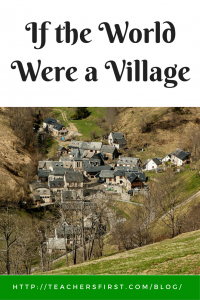 April is Mathematics and Statistics Awareness Month. The Joint Policy Board for Mathematics (JPBM) created this effort to build awareness of the importance of math and statistics in addressing real world problems like immigration and climate change.
April is Mathematics and Statistics Awareness Month. The Joint Policy Board for Mathematics (JPBM) created this effort to build awareness of the importance of math and statistics in addressing real world problems like immigration and climate change.
Even our youngest students understand statistics when we use age-appropriate lessons such as this one from the National Council of Teachers of Mathematics. This lesson focuses on collecting information – like real statisticians – as students become data detectives to complete their investigations.
The use of children’s literature in the lesson helps generate enthusiasm while providing support for learning of statistical concepts.
There are many excellent examples of children’s literature to use when teaching statistics. Start your search with lists from LetsReadMath and NZMaths. These two sites provide lists of picture books and easy to read books for math classrooms.
If the World Were a Village by David J. Smith is an excellent example of a children’s book for use in teaching statistics across many grade levels. This book challenges readers to envision the world population as 100 people while keeping proportions intact. The book shares many statistics, including religion, age, and language spoken. By bringing huge numbers down to manageable size, students can easily visualize differences in cultures and diversity around the globe.
Let’s use this book as an example of ways schools can participate in Mathematics and Statistics Awareness together across all grade levels.
Early elementary students will enjoy watching the video of this book. After watching the video:
- Start with your driving question as you identify data you will gather
- Work together to count and share one set of statistics from the book
- Record and collect data using graphs
- Download a 100s chart and fill in the percentages of people represented by each nationality (or age) using different colors
Older elementary students will also enjoy reading the book and watching this video. You might also want to include this audio recording of the author telling the story behind the book.
- Take advantage of ideas in this lesson plan from Mapping.com.
- TES offers this extension activity, which includes a PowerPoint for free download.
- Wolf Creek Public Schools shares this unit featuring the book for use with grades 4-8.
- NRich Maths provides another set of activities to accompany the book. Be sure to find and print the Teacher’s Resource page including key questions and extension activities.
Junior High and High School students will appreciate using this book as a springboard to exploring statistics in-depth.
- After reading the book, share this video from TeacherTube as inspiration for students to create a multimedia project sharing information gathered during research
- Dig deeper into statistics and comparison across countries and continents by sharing the website If It Were My Home. This site is a comparison tool for comparing living conditions in your country to those of other nations.
- DataUSA offers comprehensive data and statistics from around the USA. Search the site to find information on poverty, education, wages, and much more.
- Ask students to create infographics of their findings using a tool such as Canva Infographic Creator
- Have students create interactive presentations using Microsoft Sway
- Compare and contrast information from the book to statistics found on 100 People: A World Portrait. This site narrows down world population statistics as a whole instead of by continent.
All students, young and old, enjoy picture books. If the World Were a Village is just one of many examples of children’s literature perfect for teaching content in math classrooms of all ages. Consider suggesting this book, or another of your choosing, as a tool for teaching statistics as a community experience to share across grade levels.

